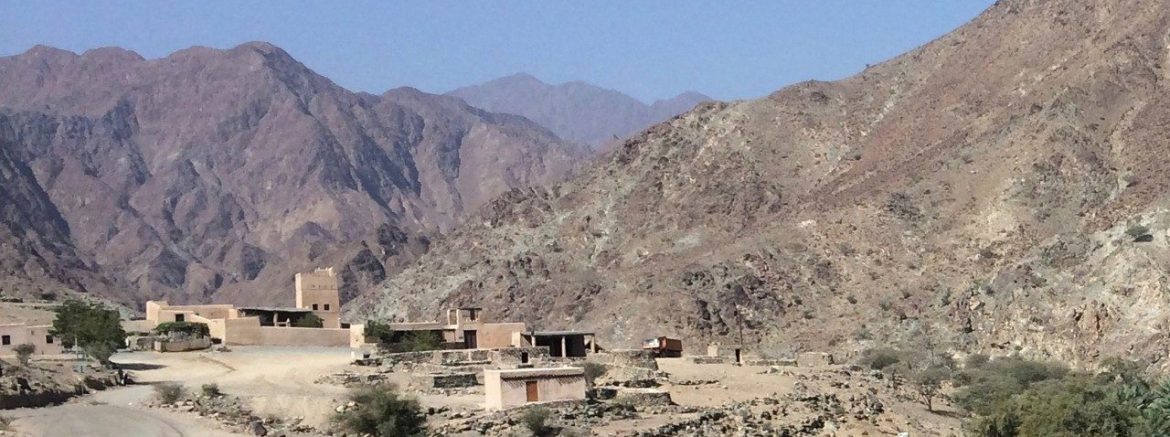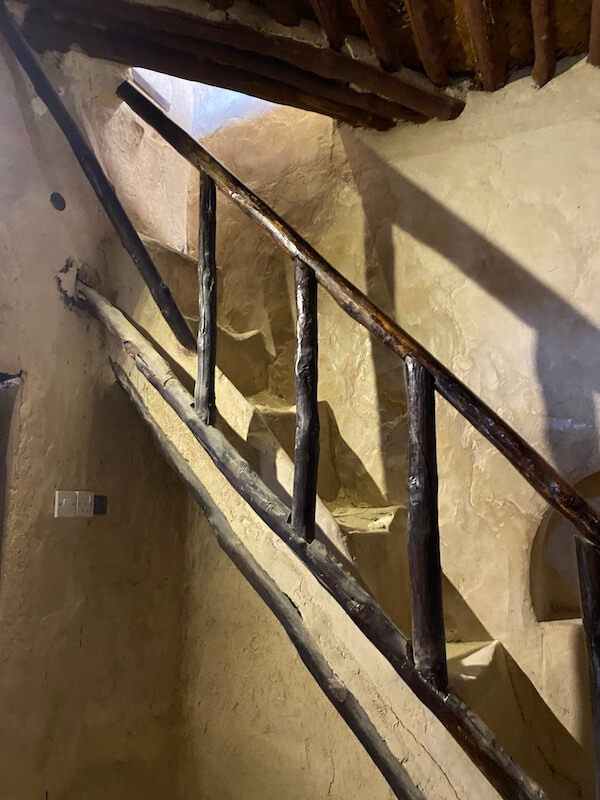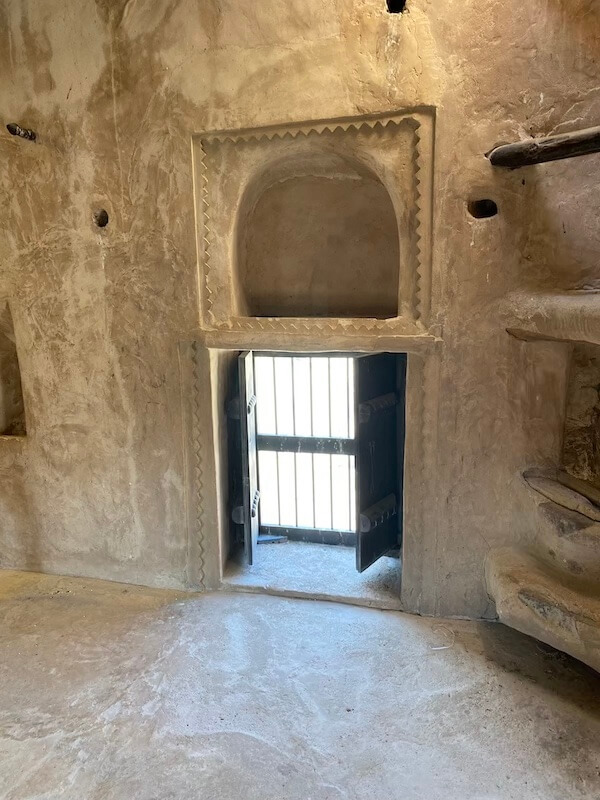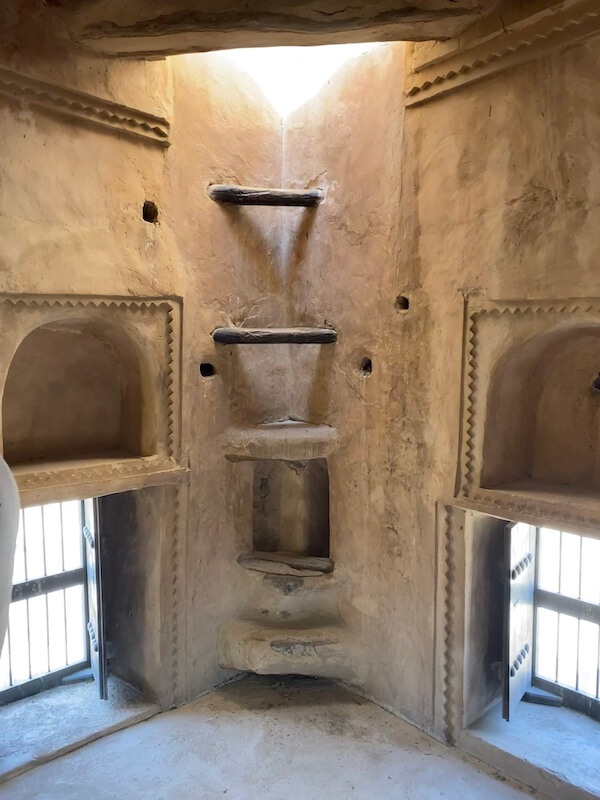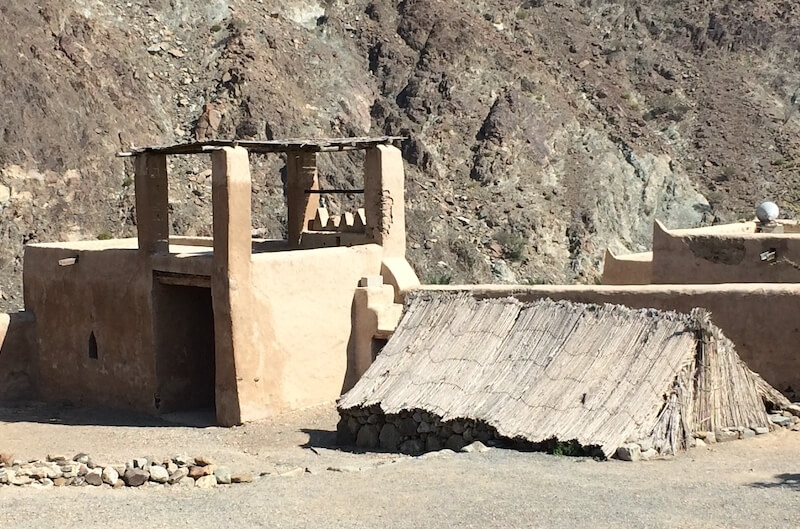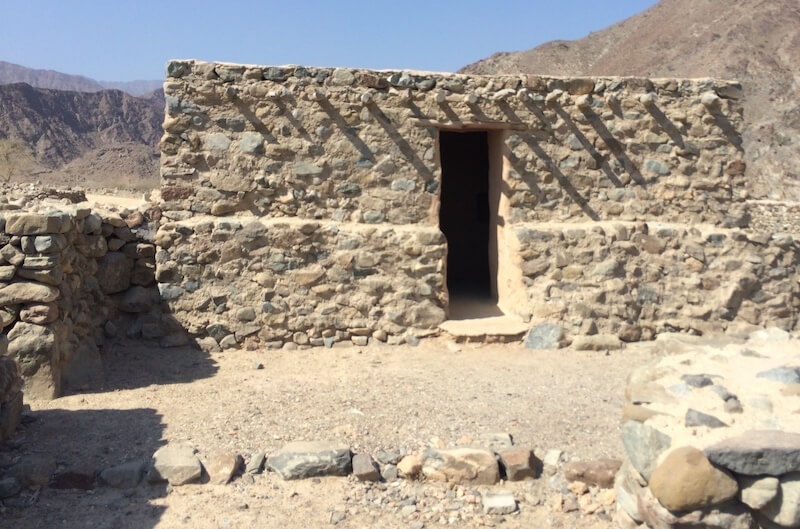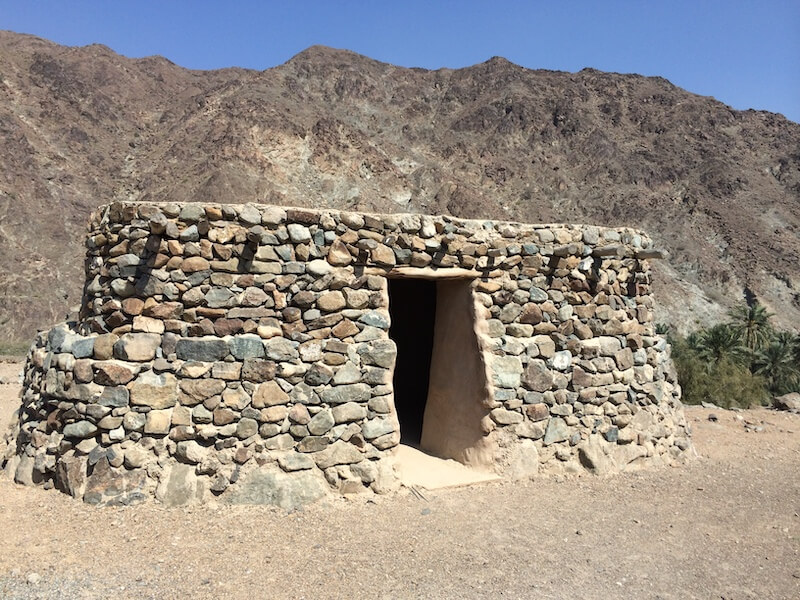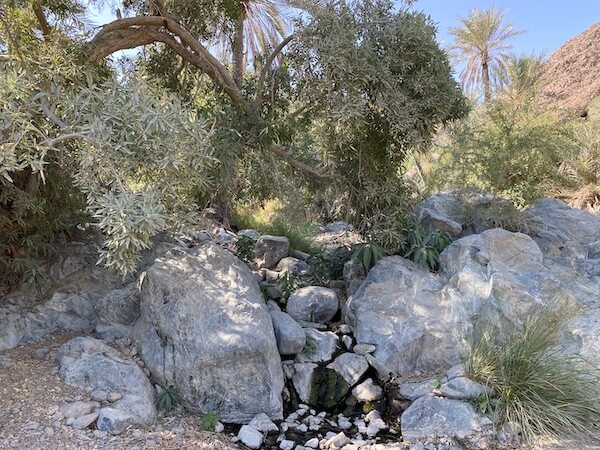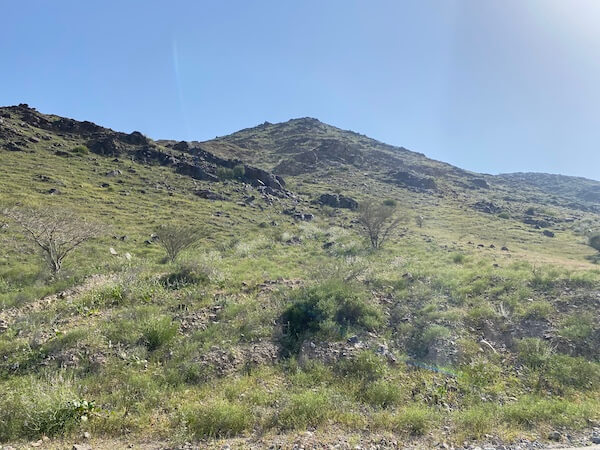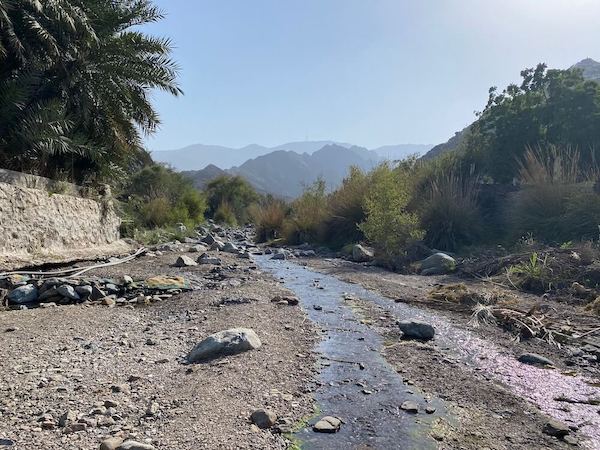Nestled in the Hajar mountains, Al Hayl Fort is often missed by tourists and residents alike. The fortified courtyard house was originally built in the time of Sheikh Hamad bin Abdullah Al Sharqi, who ruled Fujairah from 1876 to 1936. Chemical analysis shows it was built around 1930. It was renovated by Fujairah Department of Heritage and Archaeology in 2006-2008.
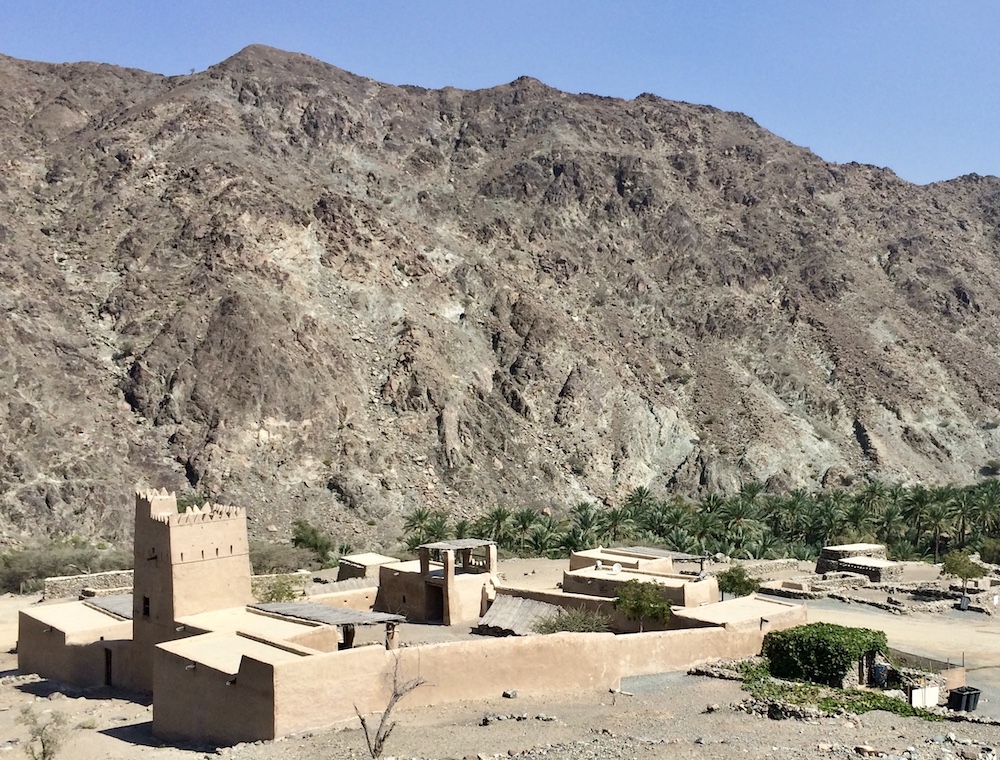
Disclosure: When you make a booking or purchase through links on this site, I may earn commission from partners at no extra cost to you. This helps me to build the site and bring you more great posts!
Al Hayl Fort Fujairah
One separate room in the corner of the courtyard (see photo above) was used as a shop and it sold items such as rice, sugar, sorghum, coffee, clothes, perfumes, rose water and jasmine oil. (Ziolowski and Al Sharqi, see references at the end). It also contained a madbasa, a place for pressing dates to collect the syrup, known as dibs).
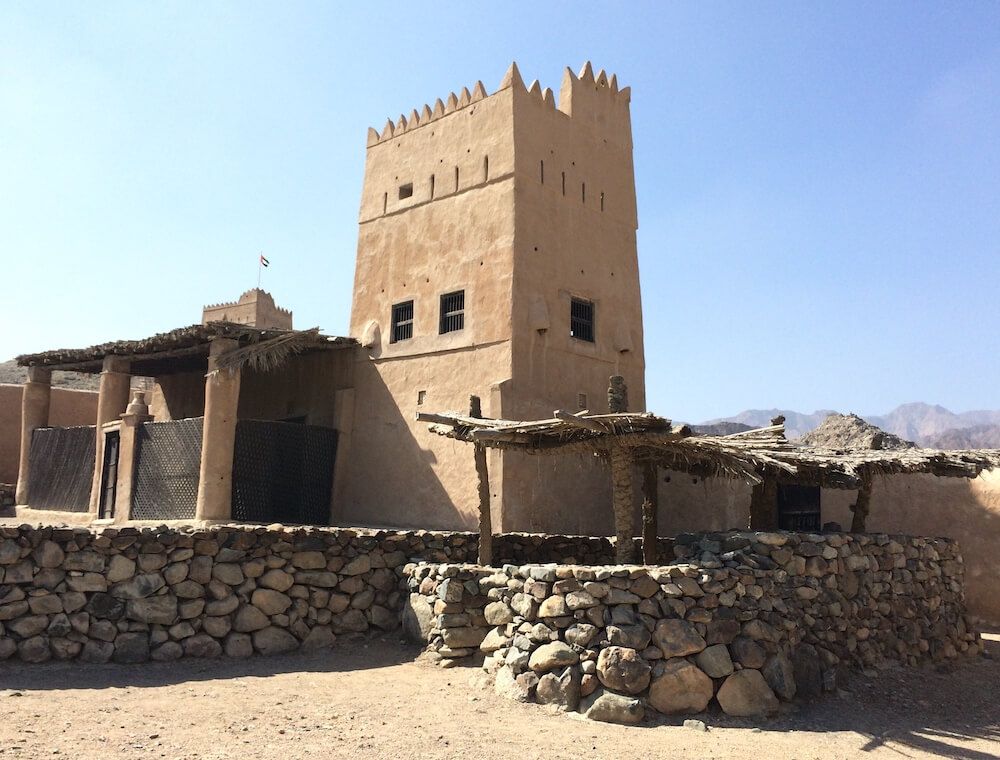
The madbasa (see below) was where dates where piled up and stones placed on top of them so that the syrup would be pressed out. It would trickle into the hole from where it would be collected. Date syrup is called dhibs.
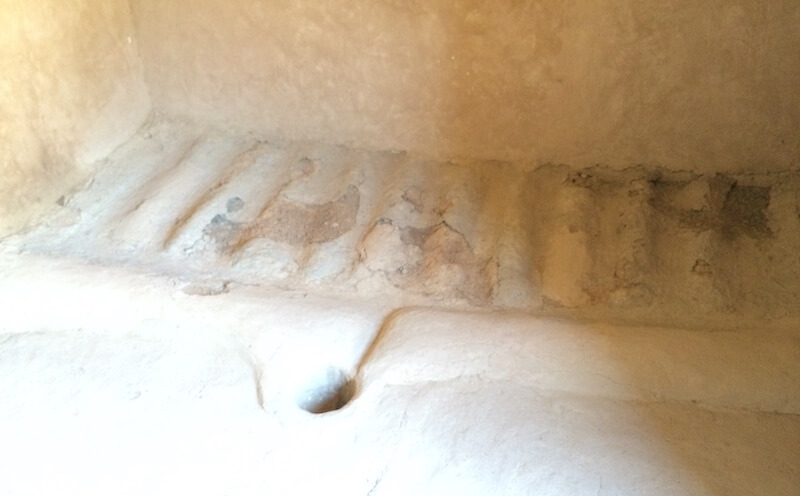
The buildings on Al Hayl Square were built for Shaikh Abdullah bin Hamdan Al Sharqi. The main building has two floors, with bedrooms, bathrooms, sitting rooms, a kitchen and stores.
Outside there is a mosque, which is still in use, and a majlis. The external watchtower on the hill was built at the same time as the main house.
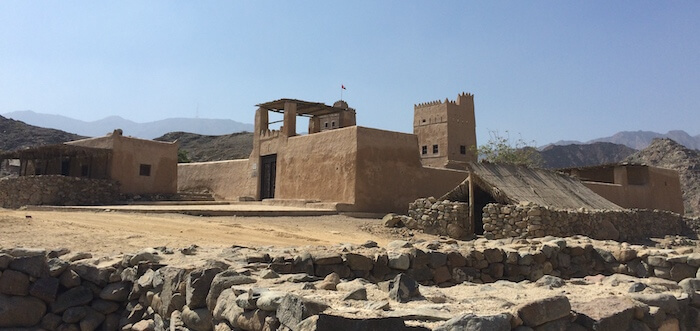
The watchtower was used as a residence for some time by the sheikh’s younger brother. It contains a fireplace, washing area and a madbasa (which was added later.)
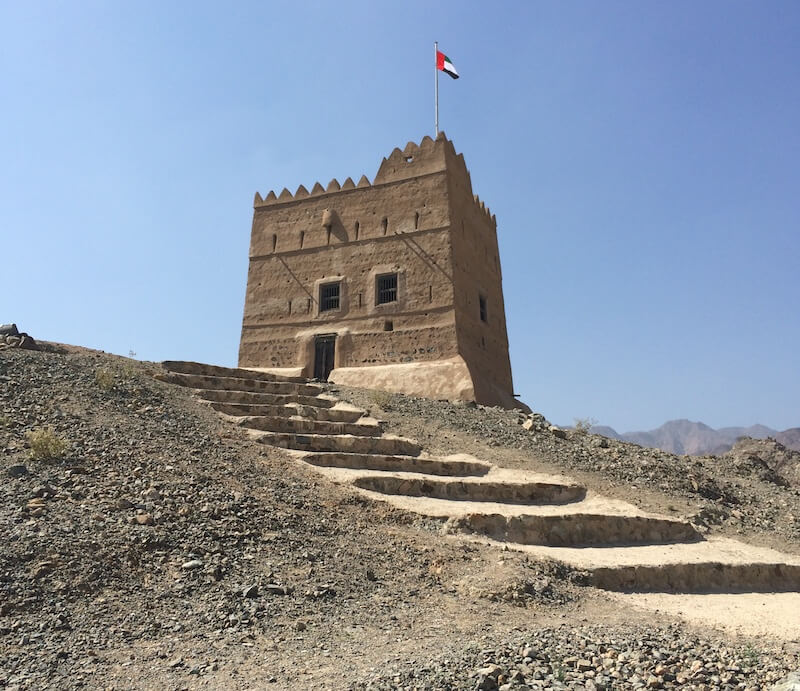
There were other stores, houses and animal pens, tobacco drying rooms, and a yanoor, a room for drying henna and threshing sorghum, completing the village (Ziolowski and Al Sharqi). Most of these, but not all, are still standing and there has been some restoration. On the other side, you will see a walled graveyard.
The Old Hayl Fort and Village
Further down the track (away from the paved road) stand the remains of an abandoned village and hillfort, which has been carbon-dated to a time between 1470 and 1705 AD.

Remnants of pottery have also been discovered in this area dated back to the first and second millennia BC and the Bronze and Iron Ages. The hillfort dates back to somewhere between 1470 and 1705 AD (Ziolowski and Al Sharqi). You can see the walled terraces more clearly in the photo below.
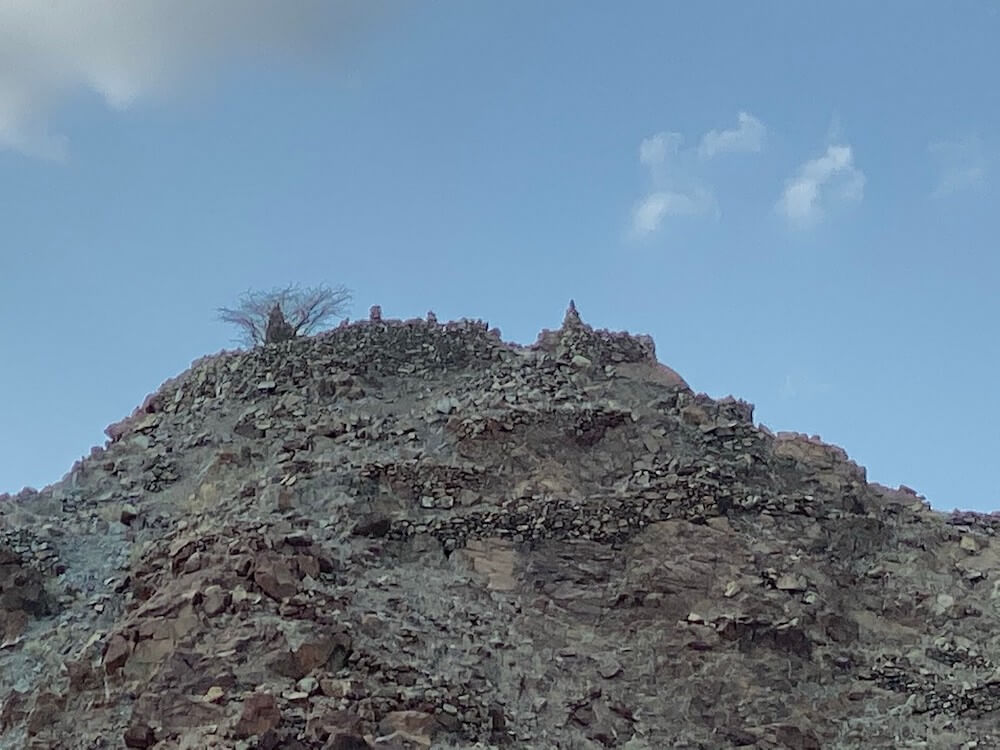
Wadi Hayl is also home to many petroglyphs. There are some fenced off further up the wadi beyond the watchtower.
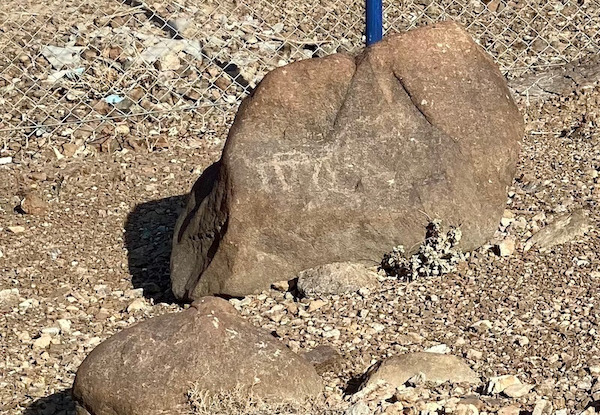
Although the last villager left in the late 1970s, there are still many working farms in the area and old stone fences can still be seen in the terraces down in the valley.
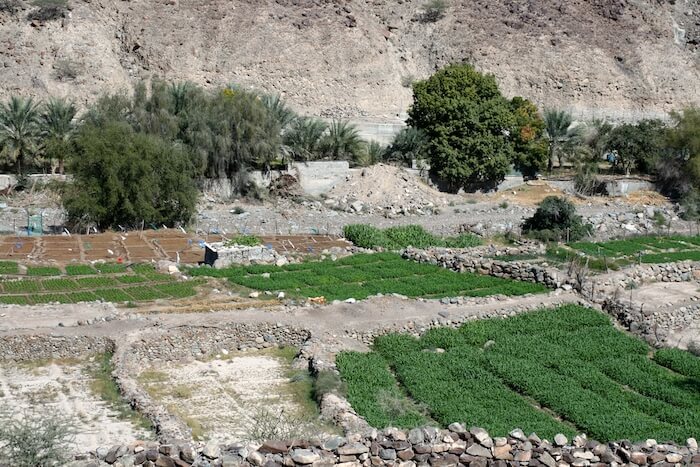
Wadi Al Hayl Hiking Trails
What you see on your hike in Wadi Al Hayl will depend on the recent weather. The photos below were taken in the spring of 2023 after lots of rain over a few months. There will always be greenery but how much depends on the months before. The wadi is a fairly gentle hike. You can see one of my Al Hail Wikiloc trails here.
You can go on a longer hike either by continuing straight from the wadi or turning right into a less green area where a track crosses the wadi. This is rockier terrain so make sure you have appropriate footwear.

Getting to Al Hayl Fort and Al Hayl Dam
To get to Al Hail Fort, take the E102 Kalba Road then turn left at the Mountain Conservation Centre on to Kalba Ring Road (don’t take the exit that says Al Hayl, continue to the roundabout at the end.) Or you can take the E84 Fujairah Road (Sheikh Khalifa Highway) from the west and from Dibba, go right just before the big flapole, right at the roundabout, then straight. From Dibba, take the E89 and head towards the big flagpole. Here’s my map.
Once you come off the main road, there is a paved road most of the way although some parts have been destroyed by rainfall. It does turn to a narrow road further up at the edge of the mountain but only the very faint-hearted might need to look the other way.

On the way up, you’ll pass through a small village and then Al Hail Dam which is also a great picnic spot and a farming area. The dam is only full after several bouts of heavy rain so you may find it empty.
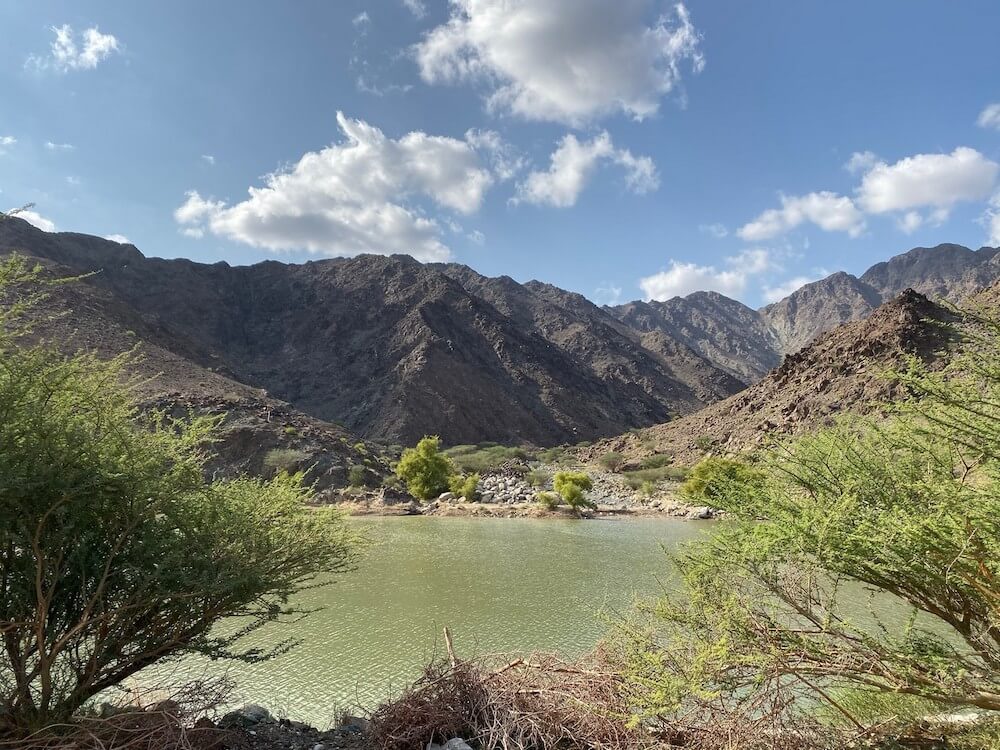
Watch out for the wild donkeys along the way, some grey, some brown.
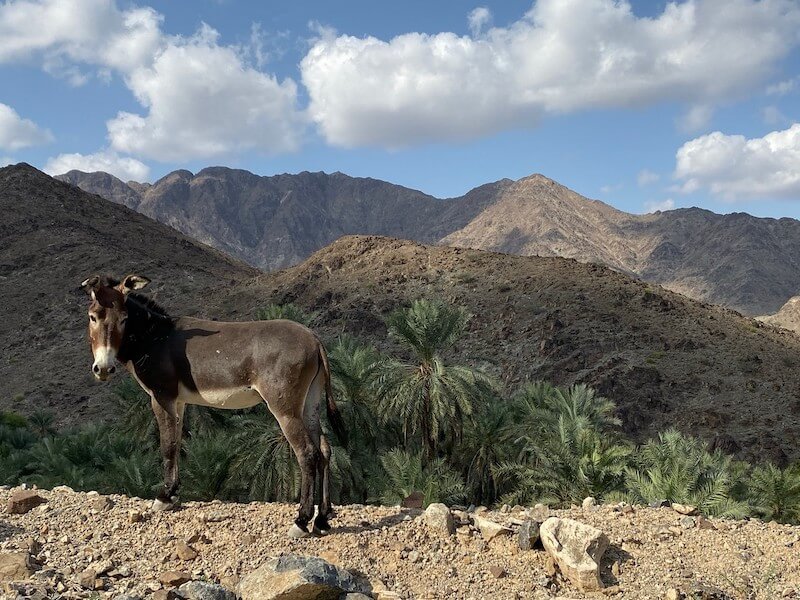
You don’t really need a 4WD to get to Al Hayl Castle but if you have one, you can venture a little further into the valleys but make sure you’re prepared as there will be no phone signal further down. (The road to Al Hayl is paved but it has been damaged in a couple of short stretches and is just very small rocks.) These photos are taken higher up the road.

Al Hayl Square and Fort is definitely a place not to be missed for those interested in the history of the region as well those who love a good walk in the mountains. Plan a day out, pack your walking shoes, lots of water and some lunch.
Tips for your trip to Al Hail Fujairah
- Take water and snacks. There are no shops or cafes.
- Take some cash to give a tip to the caretaker if he shows around. Not mandatory but always nice.
- There is a public toilet next to the fort.
- Dress modestly in rural and more conservative areas.
- Take a walk along the wadi and pack appropriate shoes to do that.
- Always take your rubbish home with you.
- Avoid the wadi in bad weather and check the forecast before hiking in Wadi Al Hail Fujairah
- Don’t enter private farms without permission.
- Morning is a better time to visit for a good light on the mountains.
- If you’re goign hiking down the wadi, tell someone where you’re going.
Take me to the map – How do I get to Al Hail Castle Fujairah
What else to see near Al Hail Fort?
- Fujairah Seven Summits
- Kalba
- Fujairah Adventure Park
- Kalba Mountain Conservation Centre and Bird of Prey Centre
This post was first published on 15 December 2019 and last updated on 29 September 2023.
References:
- Follow on Instagram or Facebook for regular photos, tips and snippets of cultural and historical information too.
- Sign up for the Glimpses of the UAE Newsletter
- Take me to the Glimpses of the UAE Map to find nearby locations and plan my trip.
- See some of my hiking trails, walks and off-road trips on Wikiloc.
- To see my Oman trips, visit In Scotterati Footsteps.
